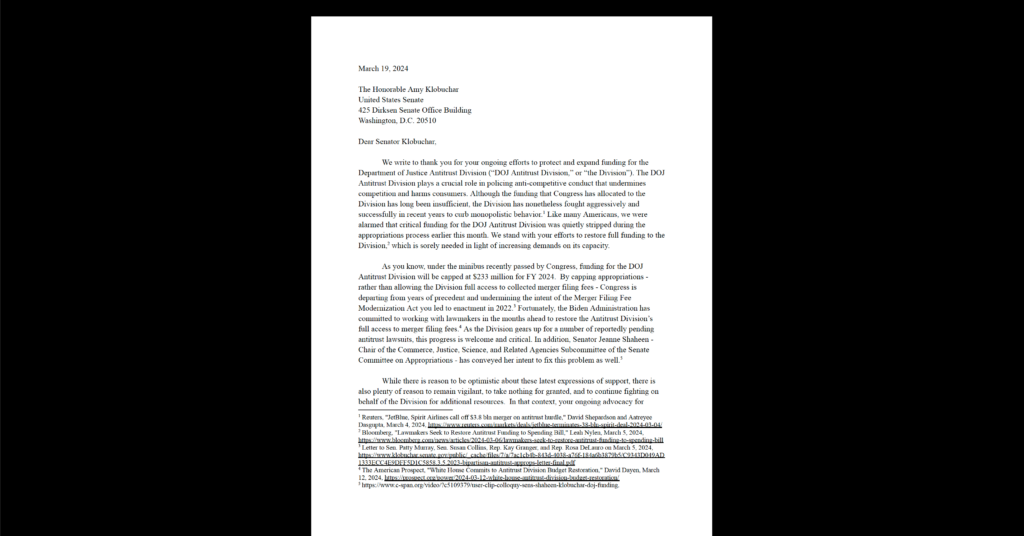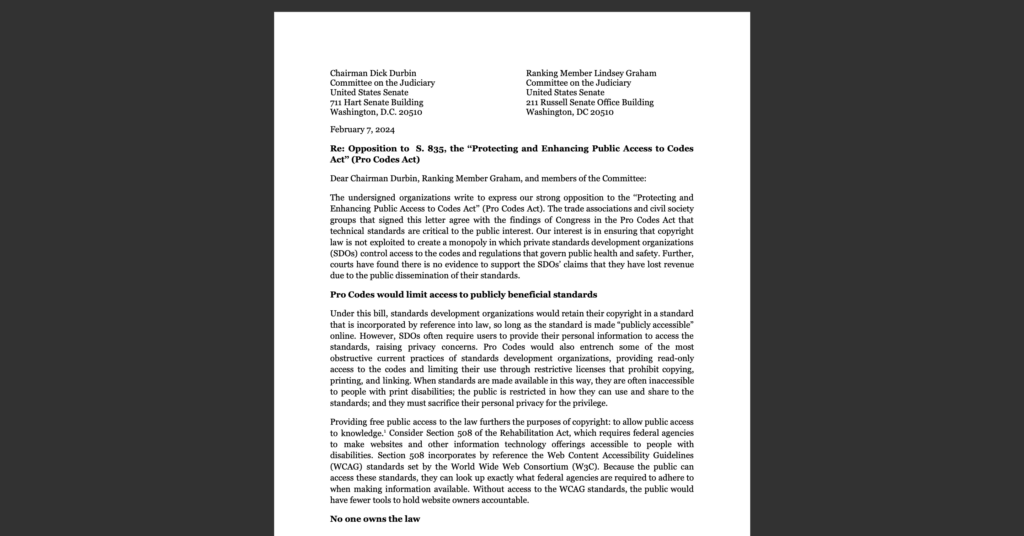The Danger of Caricaturing Opposition to PIPA and SOPA
Last Friday, two days after the massive January 18th online strike protesting PIPA and SOPA, CDT Senior Policy Counsel David Sohn appeared on TechCrunch TV to debate Viacom General Counsel Michael Fricklas in a segment entitled “Can SOPA Be Fixed Or Should It Stay Dead?”
Viacom has been a proponent of PIPA and SOPA, while CDT has been a steadfast opponent.
In his opening remarks, Fricklas stated, “I’ve never, in my experience, seen such a disinformation campaign, and a disconnect between what is being said about [SOPA], and what’s actually in the bill.”
In the discussion that followed—which TechCrunch published in three parts (Part I, Part II, Part III)—Sohn explained point by point why the bills imperiled the open Internet, are likely to be ineffective at stopping piracy, and why they would be detrimental to cybersecurity. Without employing any of the hyperbole the bills’ supporters have ascribed to the opposing side, Sohn convincingly demonstrated why such an enormous swath of the Internet community—from engineers, to VCs, conservative and liberal advocacy groups, and millions of Internet users—have opposed the bills. Has there been heated rhetoric? Sure. But concerns with this legislation are real and fundamental.
The debate displayed a major disconnect of its own. On one hand, you had a nuanced argument of why the bills are ill conceived (and, therefore, why so many people and organizations have stood against them). On the other hand, there was a dismissal of the opposition as a byproduct of a “disinformation campaign.”
Taking this argument a step farther, Michael O’Leary, Senior Executive Vice President for the MPAA—the leading crusader in the push to get PIPA and SOPA passed—recently said in an interview with Entertainment Weekly:
I think it’s not a big secret that [the negative response to the bills] was driven mostly by Google. When this debate moved from Congress to the Internet, they control the platform there. They control the means of communication in that space. They used it without any discretion or without any restraint. What you had was this campaign of misinformation which, frankly, caused the reaction that you saw.
This isn’t the first time we’ve heard this talking point, and it probably won’t be the last. But it’s just not tenable to credit the vast opposition over the past months to a top-down, misinformation campaign emanating from one company. For one thing, it fails to acknowledge substantive arguments from scores of Internet experts on why PIPA and SOPA are bad ideas. For example, does the MPAA mean to imply that Sandia National Labs was conspiring with Google when it wrote this letter?
It also completely misrepresents the nature of the opposition. There’s no denying the impact of Google’s participation on January 18th . According to Google, the company received over seven million signatures on its petition that day. But let’s consider some other numbers.
According to Fight for the Future, that organization, combined with EFF and Demand Progress (all three of which are nonprofits), generated more than three million emails to Congress on the 18th. These kinds of contacts really matter—you can bet Congressional offices are more responsive to direct messages from constituents as opposed to petition signatures. Further, Fight for the Future estimates that 115,000 websites participated in the strike.
Then there was Wikipedia, which made public its deliberation regarding whether to black out its site long before Google’s plans were known. In a press release, Wikimedia Foundation stated, “More than 8 million U.S. readers looked up their Congressional representatives through Wikipedia to protest [PIPA and SOPA on the 18th].”
Reddit was the first site to officially announce it would go dark on the 18th, and it was on Reddit that users organized a boycott of Go Daddy that eventually forced the company to flip its support of SOPA.
There was also the NY Tech Meetup rally outside the offices of Senators Chuck Schumer and Kirsten Gillibrand; the 87,000 phone calls Tumblr generated to Congressional offices on November 16th; and the 2.6 million tweets with the hashtags #SOPA and #PIPA that were sent out on January 18th alone. The list goes on.
I’m not sure it is possible to thoroughly document all the numbers, all the ways in which people have protested PIPA and SOPA, from YouTube videos, to blog posts, to social media messages. The movement was too diverse, with calls to actions originating from an untold number of sources.
But that’s the nature of a grassroots movement. It’s not top down—it can’t be fully organized, controlled, or even attributed to a single set of motives.
In a blog post published on January 16th, CDT wrote:
In the long fight to try to preserve the open Internet… a fight that preceded PIPA and SOPA and will continue far into the future—politicians and content companies may one day look back on this as the moment the open Internet woke up and decided to fight back. The implications are clear: Anyone who attempts to stifle the open Internet must contend with the millions of Internet users prepared to defend it.
The MPAA would be wise to embrace the fact that there is a commonality of interest in protecting the open Internet among an extraordinarily diverse set of actors that includes millions of Internet users and transcends political divides. It is far bigger than any single company, and to pretend otherwise is to risk repeating the same mistakes that were made with PIPA and SOPA.


